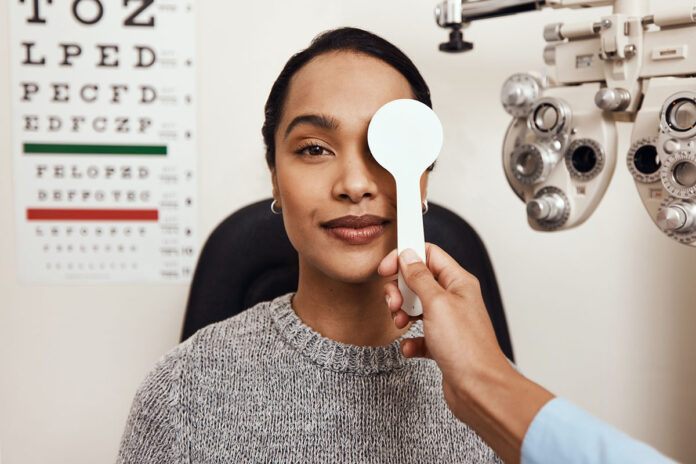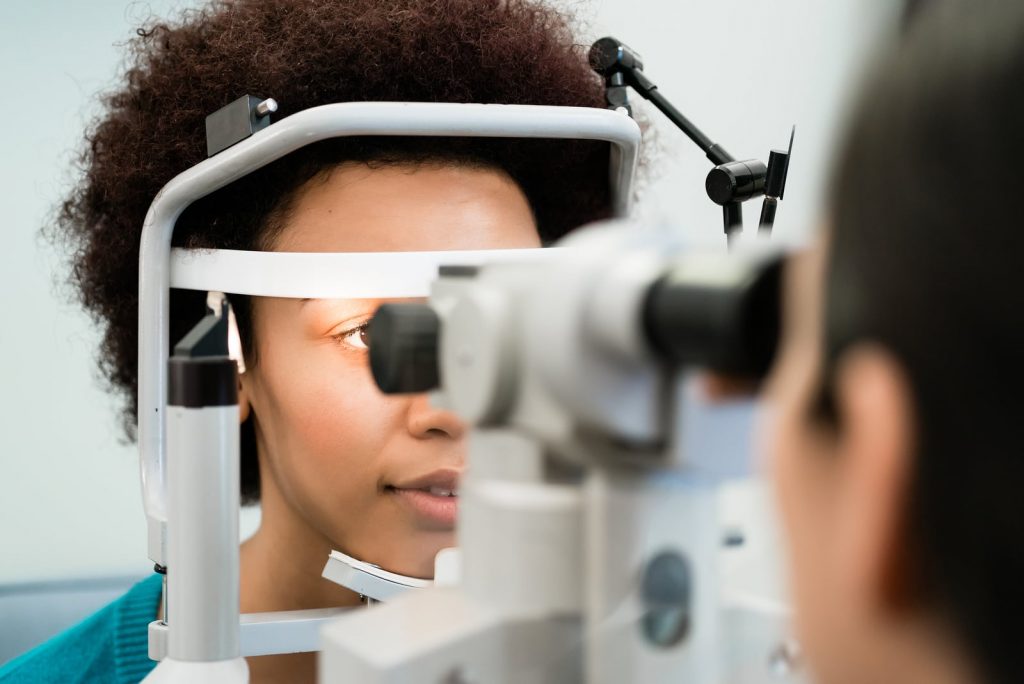African Americans are at a higher risk for certain eye diseases, including cataracts, glaucoma, and diabetic retinopathy. These conditions are often linked to other health conditions that affect overall well-being, such as diabetes and high blood pressure.
The concerning fact is that many of these eye diseases don’t exhibit symptoms in the early stages, making early detection and treatment crucial to prevent vision loss or blindness. Unfortunately, Black communities experience some of the highest rates of vision loss and blindness caused by eye diseases. However, comprehensive dilated eye exams can play a significant role in detecting these diseases early and facilitating effective treatment.
Understanding Cataracts
Cataracts are a common cause of cloudy or hazy vision, primarily affecting older individuals. They occur when the protein in the natural lens of the eye begins to break down and form clumps. Symptoms may include blurry vision, double vision, and difficulties with color and night vision.
African Americans have higher rates of cataract-related vision loss and blindness. Research indicates that African Americans are more likely to develop cortical cataracts, which are commonly associated with conditions like diabetes and high blood pressure. They are less likely to develop nuclear cataracts, which affect the center of the lens. Furthermore, African Americans have a lower rate of cataract surgery and a higher risk of uveitis, and inflammation in the middle layer of the eye, after surgery.
Reducing the Risk of Cataracts
While it’s not possible to prevent cataracts completely, certain steps can help delay or slow their development:
- Maintain a healthy diet and engage in regular exercise.
- Undergo regular eye exams to detect cataracts at an early stage.
- Quit smoking if you are a smoker.
- Wear sunglasses with 100% UV protection and use floppy hats to shield your eyes from the sun.
- Manage other health conditions, such as diabetes and hypertension, by visiting your doctor regularly and following their advice.
- If diagnosed with cataracts early, consult your eye doctor to explore treatment options that can improve vision and determine when surgery is necessary.
Diabetic Retinopathy
Diabetic retinopathy is an eye disease caused by diabetes. High blood sugar levels can lead to blood vessel leakage, swelling, scar tissue formation, and abnormal new blood vessel growth in the eyes. This condition can cause front and peripheral vision loss, along with other complications like retinal detachment. Diabetic retinopathy affects a significant number of African Americans, primarily due to the higher prevalence of diabetes within this population.
To lower the risk of developing or managing diabetic retinopathy, consider the following steps:
- Undergo regular diabetic eye exams as recommended by your eye doctor.
- Follow your doctor’s instructions to control diabetes through diet and medication.
- Adhere to your eye doctor’s treatment plan if diagnosed with diabetic retinopathy.
- Maintain open communication among your eye care provider, primary care doctor, and specialists to ensure comprehensive management of your overall health and eye condition.
Understanding Glaucoma
Glaucoma is a group of eye conditions characterized by increased pressure within the eyes, leading to optic nerve damage. Over time, this can result in vision loss or blindness. African Americans are at a higher risk of developing glaucoma compared to Caucasians, with a higher prevalence and earlier onset of the disease. A family history of glaucoma increases the risk further.
To minimize the risk of glaucoma-related vision loss, consider the following measures:
- Schedule regular dilated eye exams with glaucoma testing as recommended by your eye doctor.
- Discuss moderate exercise options with your eye doctor, as exercise may aid in glaucoma prevention.
- Follow your eye doctor’s prescription for glaucoma eye drops or other recommended treatments.
- Consider laser treatment or glaucoma surgery if advised by your eye doctor.
Tips for Maintaining Healthy Eyes
In addition to specific measures related to eye diseases, adopting a healthy lifestyle and practicing overall good eye care habits can benefit eye health. Here are some general tips:
- Schedule regular eye exams to detect any potential issues early.
- Maintain a healthy lifestyle by following a nutritious diet and engaging in regular exercise.
- Protect your eyes from the sun by wearing sunglasses with 100% UV protection and using floppy hats.
- Keep other health conditions, such as diabetes and hypertension, under control by visiting your doctor regularly and adhering to their recommendations.
- Seek prompt medical attention if you experience significant vision changes or eye-related symptoms.
Awareness of the increased risk of eye diseases among Black communities is crucial. Taking proactive steps, such as regular eye exams, adopting a healthy lifestyle, managing chronic conditions, and seeking timely treatment, can help maintain good eye health and minimize the risk of vision loss or blindness. By understanding the specific risks associated with cataracts, glaucoma, and diabetic retinopathy, individuals can take control of their eye health and preserve their vision for years to come.







